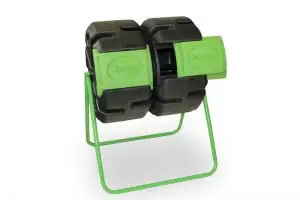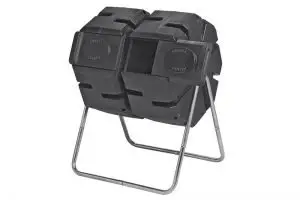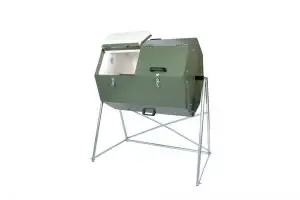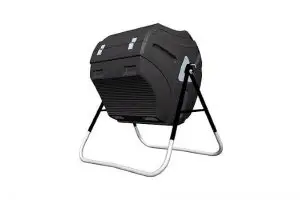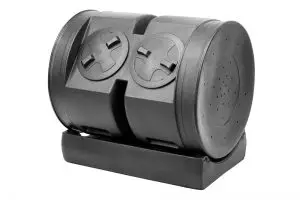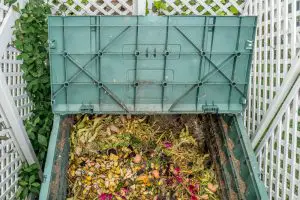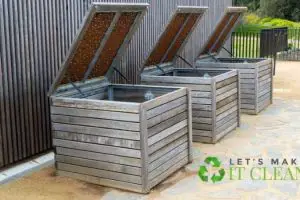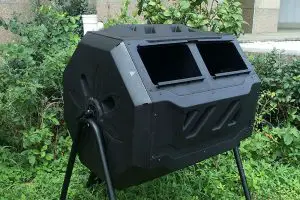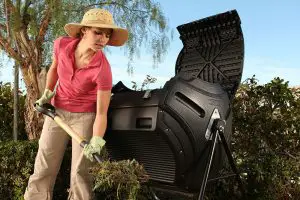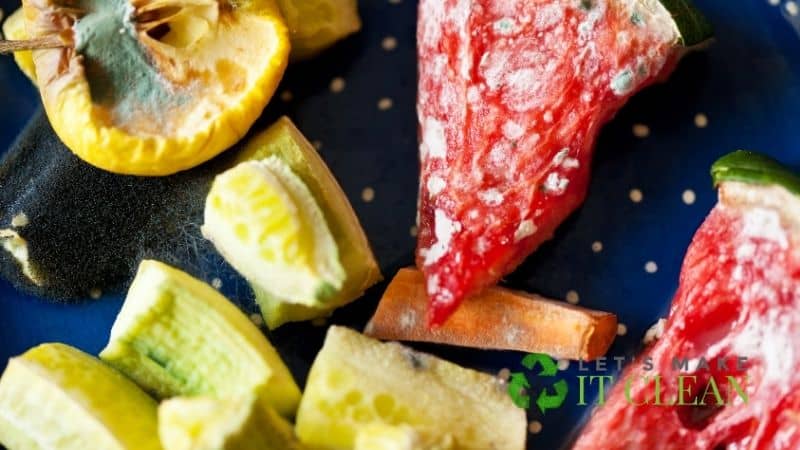Instead of dumping leftover food elsewhere, add it to the kitchen compost bin. Your fruit waste will also go into the bin as part of the content to be regularly emptied into a composter.
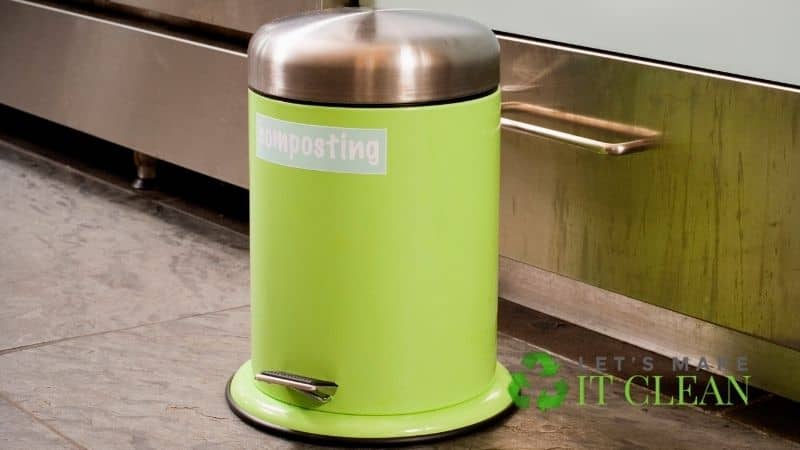
Are you in search of an eco-friendly way of repurposing your food scraps? Modern-day technology is aiding composting through the use of kitchen compost bins.
Quick Navigation
You can now conveniently turn all your kitchen waste and food waste into high-quality compost.
Read through this article and learn how you will repurpose food scraps for your benefit and the garden soil.
How to Use a Kitchen Compost Bin?
Whenever the need arises to have a kitchen compost bin, you have two options: buy or make one. Your needs determine the size and shape of the kitchen compost bin you will be using. Similarly, kitchen space will dictate where you place the composter.
Once you have gathered enough kitchen scraps and other material for kitchen composting, add them to your bin.
There is a wide range of food waste to be used in a kitchen compost bin. Grains, whether cooked or uncooked, coffee grounds, eggshells, and tea bags are safe to use in the composter. If you have any vegetable and fruit wastes, feel free to add them to your compost pile.
Be warned, however, that having dairy products, cooked or uncooked meat and fish from your kitchen waste is unwise. This type of food scraps have odors that attract rodents such as rats. Maggots, too, thrive in an environment with this type of food scraps.
How Do I Make a Kitchen Compost Bin?
There are essential materials that you need for this task. A canister that can be sealed with ease is the first requirement. You will also need drill holes through the bin using a drill and a quarter-inch drill bit.
The smells from your composting content will require filtering by the use of a charcoal filter. Dark tape, a pair of scissors, and a scrapbook for decoration will also come in handy.
The Process of Making the Compost Bin
The first step is selecting a bin that will fit your kitchen scraps. You have the freedom to use a metallic tin, a sour cream bin, or even a small paint bucket.
Secondly, make sure you clean the bin thoroughly. The cleaning helps remove all unwanted substances that would contaminate your compost.
Attach your ¼ inch drill bit to your drill. Now use it to make several holes in the container’s lid. These holes will facilitate sufficient air circulation.
The next step is getting the correct measurements of the chosen canister. Use the pair of scissors to cut pieces of the scrapbook. Now mount those decorative pieces on the bin using dark tape. The canister will serve as a composter and artistic piece for the kitchen counter.
The final step is placing your bin on a surface with easy access and a favorable temperature for composting. This surface can be either a kitchen counter, under your kitchen sink, or even a cabinet.
Remember to stir the bin’s content to allow air and moisture circulation, which hastens the composting process.
How Do You Use a Small Compost Bin (Reduce Food Waste)?
Garden soils need compost for improved productivity. As a gardener who is aware of this garden demand, you look for the easiest composting methods. A compost tumbler is on the table.
You also consider using worm castings but finally decide to use a small compost bin. However, you have no idea where to start. Use the following easy steps to turn all yard waste and food scraps into desirable compost:
Choose an Appropriate Location
At the top of your priorities is the space to position your canister. The location chosen must dry and have a shade to avoid direct exposure to sunlight.
If you have a kitchen garden, place the bin near the garden. This cuts the distance when transferring finished compost to the soil and kitchen waste to the bin.
Add Brown Materials
Brown matter is nutrient-rich and well suited for use in composters. Cut materials such as dried leaves swept from the yard, tree branches, and twigs into small pieces. Add these scraps to your pile.
Add Green Material
The next step is providing nitrogen-rich content for decomposition from garden plants.
Vegetable scraps, grass clippings, yard waste, fruit scraps, and other wet items from your kitchen waste will serve the purpose. Mix these compost ingredients for faster and efficient composting.
Add Water
Efficient composting demands that you have optimum moisture levels in the composter. The gallon capacity of your heap determines how much water you will have to add.
Regular Mixing
After the lapse of two weeks, make sure you turn the heap using a pitchfork. The turning will allow adequate air circulation, which reduces foul odors and hastens the composting process.
Does a Kitchen Compost Bin Need Air Holes?
Air circulation is vital in compost piles. Holes that let in air, therefore, become an essential contributor to the process of making first-class compost. Without any air hole on the lid, your composting material will get stinky.
The leaves in your composting system need to be broken down to form compost. Every other ingredient in the kitchen compost bin also needs breaking down.
Bacteria take the crucial role of breaking down anything added as composting content. If there isn’t any air hole in your container, the bacteria will be deprived of oxygen resulting in poor performance.
The air you allow into your canister needs to reach every spot, including the bin’s center. In most cases, the center has the highest temperature, which requires control.
Control will allow the faster breakdown of the compost, keeping the temperature high in all parts. Besides, the high temperature kills weeds that may attempt to grow.
What to Do With Finished Compost?
Once you have collected the finished compost, you are free to use it for freshening up your garden. Mix the compost with the soil around your plants and reap the benefits.
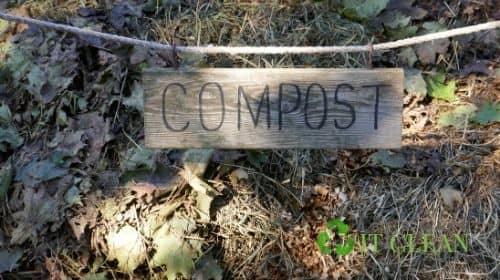
If you have plants in your house, such as flowers, apply the compost in the soils supporting their growth. The compost should be blended into the first two inches of the soil in the container holding your houseplants.
Alternatively, you can make plans to have a tree planting celebration as a way of utilizing the compost. Whenever people plant trees, the environment benefits from the wide range of advantages trees have to the surrounding.
Conclusion
To sum up, we hope you are now aware of how to use your kitchen compost bin best. With the above information, making a compost bin for home use is manageable. You have the power to decide which composter you are going to use comfortably in your home.
Besides, with a kitchen compost bin, you don’t have to worry about unpleasant odors. The charcoal filters used in these bins help reduce the odors creating a comfortable space. You should also avoid meat and dairy products that mess up the composting system.

